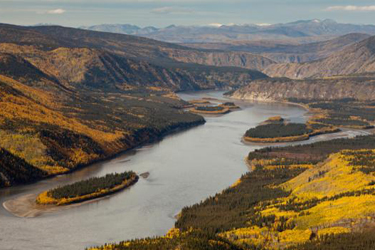
In 1896, some two Indians living in the Yukon area, namely Charlie Tagish and Jim Skookum, and one Seattleite gentleman called Carmack George made a sensational discovery near Dawson, particularly in Rabbit Creek - the place was littered with gold! The creek soon became known as Bonanza Creek with many locals laying claims on the fortune.
Yukon was in a remote region, and it took almost a year for the news to spread across and when it finally did, the Gold Rush began. It all started with the headline of 68 rich men arriving from the Portland Steamer, carrying bars of gold. With America going through a recession, the news spread like wildfire and hundreds of thousands abandoned their living. While some might say that it was a rush to the grave, many others were hopeful as they headed for the Yukon River to join the famous Klondike Gold Rush.
What Made It Tempting?
America was facing a recession which led to a harsh economic situation. The discovery of gold in Yukon was like a dream come true. In less than six months after the news of the arrival of gold in Poland, about 100,000 miners embarked on a journey to Yukon. Of these, 70,000 never made it to the end of the journey.
What Transpired During The Journey?
A good number of them lost enthusiasm and either went back to their homes of stayed where they were. Many of them also died on their journey to Yukon.
The journey was cold, arduous and long. Many of the gold-seekers had to walk together with their animals carrying their supplies on their backs. It was a requirement by the Police in Canada that all miners carry pounds of supplies that could last them for a year.
Even so, some of them miscalculated and they ended up starving to death. Some also suffered malnutrition and ended up with health issues.
A story is told of one miner who was forced to boil his boots so he could at least get something to drink.
Thousands of travelers suffered from harsh weather conditions, particularly the cold weather. The temperatures in Yukon averaged -200 F but on some days, it went to as low as -500 F.
Another major issue was the routes they had to take. There were only two trails: the White Pass and the Chilkoot trails.
The Chilkoot Trail was very steep and had some outlaws. It was a very difficult trail to pass through and many of the Klondikers were ill-prepared for it. That's why many of them died there from natural causes while some died from eating meat from dead horses. Some men even went insane on this trail due to mental torture.
On the White Pass Trail, Klondikers not only suffered from the harsh weather conditions but they were also faced with a conman by the name Jefferson from Denver. Jefferson took over Skagway, Alaska, and set up Jeff's Place (a casino/saloon). He had a 300-men gang that he used to fleece the miners heading to Yukon. He even had a fake telegraph with poles and wires that could not even transmit any message. Nonetheless, he collected cash from Klondikers who were desperate to send messages home. Many Klondikers suffered here waiting for responses from their families not knowing no messages were wired in the first place.
How Did The Gold Rush Boost The City's Economy?
Dawson, that used to be a tent city, became alive with the arrival of 30,000 men and women. It became the biggest city north of San Francisco with many amenities unimaginable just a few years earlier. For the first time, the streets had fire hydrants and electricity was supplied. In fact, Dawson became the first city to have electricity in the western region of Canada.
Security was also boosted with the Canadian police taking charge and barring con men like Jefferson from entering Dawson. With the growth of Dawson, Yukon became recognized as a Canadian Territory in 1898.
Dawson wasn't the only city that experienced growth, the Gold Rush led to the dramatic growth of other cities like Alberta and Vancouver.
The total value of gold that was mined was estimated to be more than $1 billion. The miners became rich very quickly. The riches were not only from gold, somebody like London Jack made a fortune by writing about Klondike experiences. A lady by the name Mulroney Belinda also minted thousands of dollars by selling supplies and running a food joint.
The effect of the Gold Rush went far and wide. Even businesses in Seattle experienced some boost. The businesses in Seattle made more than $1 million selling supplies to those who were traveling to Klondike.
Conclusion
The Gold Rush brought riches to a few individuals. It also brought much development to the Yukon and the surrounding areas, even as far as Seattle. All these came at a price. The journey was tough and many gold seekers died on their way to Yukon. Those who arrived late were also forced to work for those who arrived earlier. The Gold Rush is an inspiring journey that will be told over and over again.
